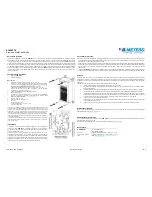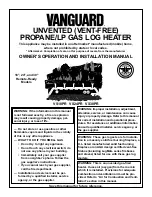
4
The bathroom radiators are high quality products which are suitable for drying
towels as well as heating rooms. For this reason it is important to remember
that they have hot surfaces. Only textiles that have been washed in water may
be dried.
Of course it is not permitted to use the radiators as climbing frames or sports
equipment.
The radiator surfaces must be cleaned with gentle non-scouring cleansing
agents.
For electrical heating operations the heating water must always be able to
expand to the expansion tank, e.g. by opening the non-return valve. To prevent
heat being transferred to the heating network in this case, we recommend
closing the thermostat valve. Of course, the electrical heating may only be
switched on after the radiator has been completely filled with water.
For safety reasons, the radiator must not be covered completely
if it is operated electrically.
Operation and care
GB
Installation / Assembly of bathroom radiators
GB
Description of radiator
GB
IThe installation and startup of your bathroom radiators must be performed
by an authorized installation company. The applicable standards and national
electrotechnical safety regulations such as the ÖVE and VDE regulations must
be observed for installation..
For the correct installation of radiators it is essential that the fixing of the
radiator is carried out in such a way that it is suitable for intended use AND
predictable misuse.
A number of elements need to be taken into consideration including the fixing
method used to secure the radiator to the wall, the type and condition of the
wall itself, and any additional potential forces or weights, prior to finalising
installation.
*In accordance with European Standard EN60335-2-43+A1:2006-10-01:
WARNING:
in order to avoid any danger to very young children, it is recom-
mended to install the appliance in such a way as to ensure that the lowest
heating bar is positioned at least 600 mm above the ground.
The piping must be prepared in consideration of the geometric dimensions of
the heating element and the connection elements (valves, screw connections)
– see
(Fig. 1 and Fig. 3)
.
We recommend maintaining a space of at least 100 mm on the sides of the
heating element. Please also note the following:
If an electrical heater cartridge is used it may be sealed in one of the two 1/2“
sleeves
I
. It is important that the instructions contained in the Electrical heating
assembly instructions are complied with.
Close the unused connections with the plugs supplied, whereby the 1/2“ air
bleed must be installed in one of the two tapping
II
.
WALL INSTALLATION:
Place the sheet metal screws
1
provided on the mounting connections
2
(Fig. 2)
. Mark and drill the holes position
A
- drill Ø10 - and position the
dowels according to the suspension dimensions -
(Fig. 1)
.
To ensure solid wall fitting for valve radiators we recommend that the wall feet
B
are screwed to the wall. If this is not done, the wall feet
B
act as spacers.
Recommendation:
First verify the distance between the mounting connections 2 (Fig. 1 and
Fig. 2) in order to identify the radiator.
If necessary, (wall condition) stick the transparent plastic shims
3
provided
onto the wall feet
4 (Fig. 2)
. Please ensure that the adhesion surfaces are
clean.
Fix the upper and lower wall feet
4
in a horizontal, respectively vertical posi-
tion. The countersunk boreholes
5
in the wall feet must face outwards.
The wall mounting screw
6
should be mounted in the middle of the oblong
holes of the wall feet.
(We recommend that you check the distance between the mounted wall feet
before mounting the radiator on the wall.)
If the lower wall feet
B
were used as spacers, screw them to the mounting
connections
2
with sheet metal screw
7
.
Mount the radiator on the wall by putting the mounting connections
2
in the
wall feet
4
and connect them with the sheet metal screw
7
. The wall space
can be varied by the oblong hole in the mounting connections
2
.
If the hydraulic fittings do not fit exactly, height and length can be adjusted by
means of the oblong hole in the movable washer
8
in the wall feet.
Hydraulically connect the heating element.
The following standards must be adhered to when installing radiators:
-
DIN 55900:
Spraying area in wet rooms
-
VDI 2035:
Prevention of damage in water heating installations
-
DIN 18017 Part 3:
Ventilation of bathrooms and toilets without windows
-
EN 14336:
Heating systems in buildings. Installation and commissioning
of water based heating systems
The elegant bathroom radiators are suitable for central warm water heating
with a max. operating temperature of 110 °C and max. operating overpressure
of 10 bar.
The consistently high quality standard is subject to continuous internal and
third-party monitoring. Alterations to the heating element (e.g. welding work)
by the customer are not permitted.
The bathroom radiators can also be equipped with supplemental electrical
heating, whereby the following recommendations should be observed:
The wall installation concept is a system designed for finished walls.
Radiator Sizes
Total length x Total height
Electrical
heating element
DION/APIA Twin-M
[mm]
at 60 °C
[W]
714 x 500
300
714 x 600
300
714 x 750
300
714 x 900
300
1134 x 500
300
1134 x 600
300
1134 x 750
600
1134 x 900
600
1764 x 500
600
1764 x 600
600
1764 x 750
900
1764 x 900
900


























